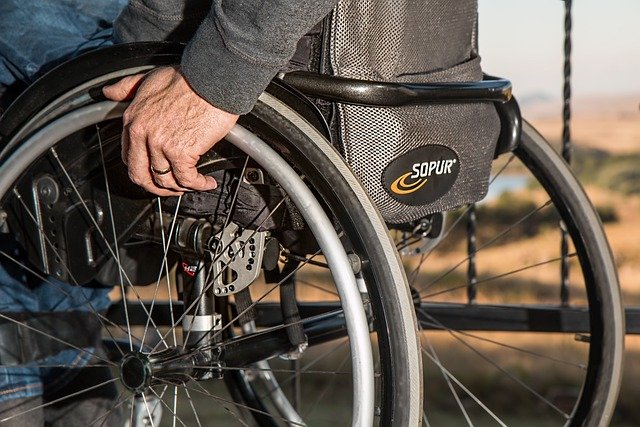Portable Stairlifts UK 2025 No Installation: Safe, Affordable Mobility Solutions
Portable stairlifts designed for use in the UK offer non-permanent, transportable assistance that avoids structural alterations and preserves home aesthetics. This article explains how these devices work, the safety standards and features that ensure reliable operation, common product types, installation-free operation and maintenance, cost and rental options, and ideal use cases for temporary mobility support and caregiver guidance.

Mobility challenges within the home can significantly impact daily life, particularly when stairs become barriers to independence. Traditional stairlift installations often require structural modifications, permanent fixtures, and substantial investment. However, portable alternatives have emerged as viable solutions, offering flexibility and accessibility without the commitment of permanent installation.
What Are Portable Stairlifts Without Installation?
Portable stairlifts represent a category of mobility devices designed to assist individuals in navigating stairs without requiring permanent installation or structural modifications. These devices typically feature lightweight construction, battery-powered operation, and removable components that can be easily transported or stored when not in use. Unlike traditional rail-mounted systems, portable stairlifts often utilise track-based or platform designs that can be positioned temporarily on staircases.
The fundamental principle behind these devices involves creating a stable, motorised platform or seat that travels along a temporary track or guide system. Users can safely ascend or descend stairs while seated or standing on the device, depending on the specific model and design. The absence of permanent installation means these solutions can be used across multiple locations or removed entirely when no longer needed.
Safety Standards and Features Ensuring Reliable Use
Safety remains paramount in portable stairlift design, with manufacturers implementing multiple protective features to ensure reliable operation. Modern portable stairlifts incorporate emergency stop mechanisms, automatic braking systems, and weight capacity sensors that prevent operation beyond safe limits. Battery backup systems ensure continued operation during power outages, while safety belts and armrests provide additional security during transport.
Regulatory compliance plays a crucial role in portable stairlift safety, with devices meeting British Standards and CE marking requirements for medical devices. Regular maintenance schedules, user training programmes, and clear operating instructions contribute to safe usage. Many models feature obstruction sensors that automatically halt operation when detecting obstacles on the staircase, preventing accidents and equipment damage.
Types of Portable Stairlifts Common in the UK
The UK market offers several categories of portable stairlifts, each designed for specific applications and user requirements. Tracked portable stairlifts utilise temporary rail systems that can be installed and removed as needed, providing smooth operation similar to permanent installations. Platform-based models feature wheeled or tracked platforms that navigate stairs independently, often requiring minimal setup.
Stair climbing wheelchairs represent another category, designed specifically for wheelchair users who need to navigate stairs occasionally. These devices incorporate motorised track systems that grip stair edges, providing stable ascent and descent. Portable evacuation chairs, while primarily designed for emergency situations, can serve as temporary mobility solutions for individuals with limited stair-climbing ability.
Affordability and Cost Considerations
Portable stairlifts typically offer more affordable entry points compared to permanent installations, though costs vary significantly based on features, capacity, and technology. Basic portable models may start around £1,500-£3,000, while advanced systems with enhanced safety features and higher weight capacities can reach £8,000-£15,000. Rental options provide additional flexibility, with monthly costs ranging from £200-£600 depending on the device type and rental duration.
| Device Type | Provider | Cost Estimation |
|---|---|---|
| Basic Portable Track System | Acorn Stairlifts | £2,500-£4,500 |
| Advanced Platform Model | Stannah | £5,000-£8,000 |
| Stair Climbing Wheelchair | TopChair | £8,000-£12,000 |
| Rental Options (Monthly) | Various Providers | £250-£500 |
| Emergency Evacuation Chair | Evac+Chair | £1,200-£2,500 |
Prices, rates, or cost estimates mentioned in this article are based on the latest available information but may change over time. Independent research is advised before making financial decisions.
Ideal Use Cases for Portable Stairlifts
Portable stairlifts excel in situations where permanent installation is impractical or unnecessary. Temporary mobility limitations following surgery or injury often benefit from short-term portable solutions that can be returned once recovery is complete. Rental properties where structural modifications are prohibited represent another ideal application, allowing tenants to maintain independence without violating lease agreements.
Multiple-location usage scenarios, such as individuals who split time between different residences, benefit from portable solutions that can travel between locations. Emergency preparedness in care facilities or public buildings often incorporates portable evacuation devices that can be deployed quickly when needed. Seasonal or occasional use in holiday homes or guest accommodations provides accessibility without permanent modification costs.
Portable stairlifts have revolutionised home mobility solutions by eliminating installation barriers while maintaining safety and functionality. The variety of available options, from basic track systems to sophisticated platform models, ensures solutions exist for diverse needs and budgets. While costs vary considerably, the flexibility and reversible nature of portable systems often justify the investment for individuals seeking temporary or adaptable mobility assistance. Understanding specific requirements, safety features, and available options enables informed decisions about incorporating portable stairlifts into mobility planning strategies.



